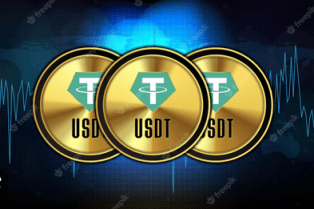Tether (USDT) has become the world’s largest stablecoin because it combines utility, security, and accessibility. In line with Tether’s commitment to keeping USDT accessible and secure, USDT has expanded across several blockchains.
As USDT has become available on more blockchains, Tether has developed a robust blockchain recovery plan. In the event that any blockchain on which USDT is available becomes disrupted, Tether has developed and will implement its proactive measures to ensure uninterrupted accessibility for our holders, and safeguarding users accessibility to their USDT.
Tether is a lifeline for hundreds of millions of users across the globe. Tether is especially important in emerging markets and developing countries, who rely on USDT in their day-to-day lives for both savings and payments. As part of honoring our user’s trust in USDT, Tether believes it is crucial to ensure that, even in highly-unlikely worst-case scenarios, USDT will never be at risk.
USDT exists independent of blockchains, which are used only as a transport layer. This allows Tether to operate on multiple blockchains and for Tether’s customers to choose from nearly 15 blockchains, including Bitcoin, Ethereum, Polygon, Solana, Tron, and Tezos. This widespread adoption underscores Tether’s commitment to interoperability and accessibility.
Before Tether begins to support a new blockchain, Tether conducts a rigorous due diligence process to assess potential risks and vulnerabilities. Despite these precautions, there is always the risk of technical difficulties. While catastrophic failures are unlikely, Tether’s commitment to user security requires it to protect user assets in any of these scenarios.
To address the risk that a blockchain could become unresponsive, unreliable or unusable, Tether has established an official recovery tool that can migrate USDT between blockchains. Users would be able to verify ownership of their addresses on an unresponsive blockchain and a recipient address on another supported blockchain, and Tether will transfer the USDT between them.
Affected users would have the option to initiate the migration process through a user-friendly interface, accessible via web or command-line tools. This process involves cryptographically signing a request for migration to verify ownership of Tether tokens. Support for popular browser extension wallets and hardware wallets such as Ledger or Trezor is available for this process. Additionally, a command-line interface allows users to input their private key directly, enabling them to sign the necessary message using an open-source script on their local machine.
The growing demand for Tether across multiple blockchains calls for a forward-thinking strategy in managing risks and maintaining resilience. Tether knows holders around the world depend on USDT. That’s why Tether has created these plans to protect your funds and keep operations running smoothly, even during unexpected challenges. As the world of digital currency evolves, Tether is dedicated to maintaining its position at the forefront of digital commerce in terms of stability, security, ease of use, and innovation.




